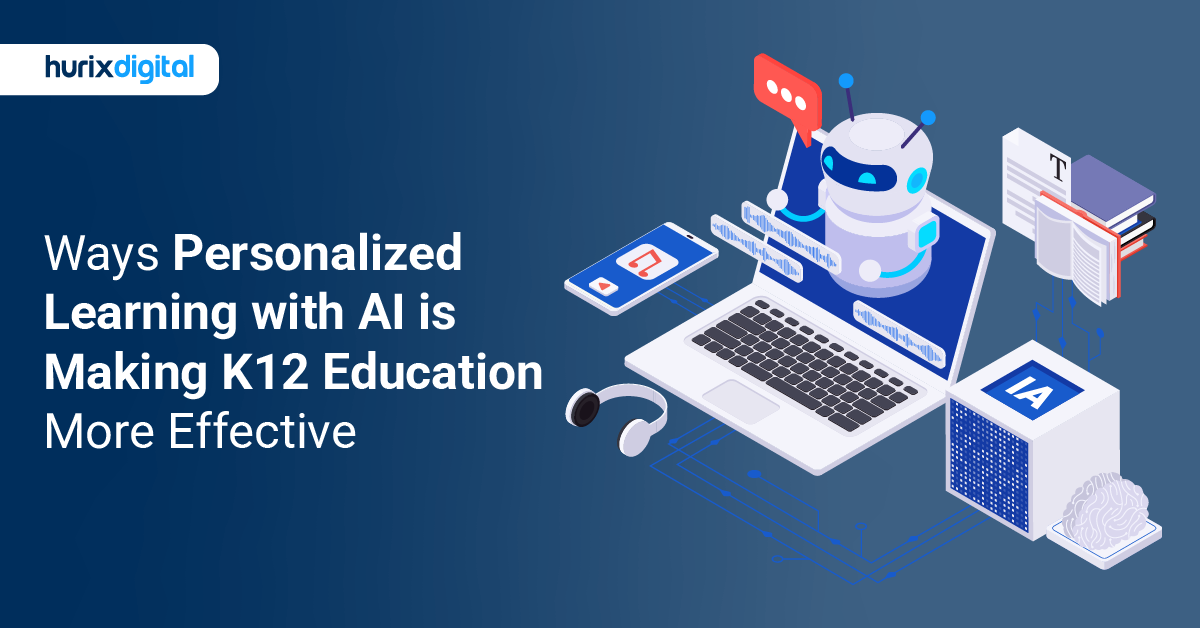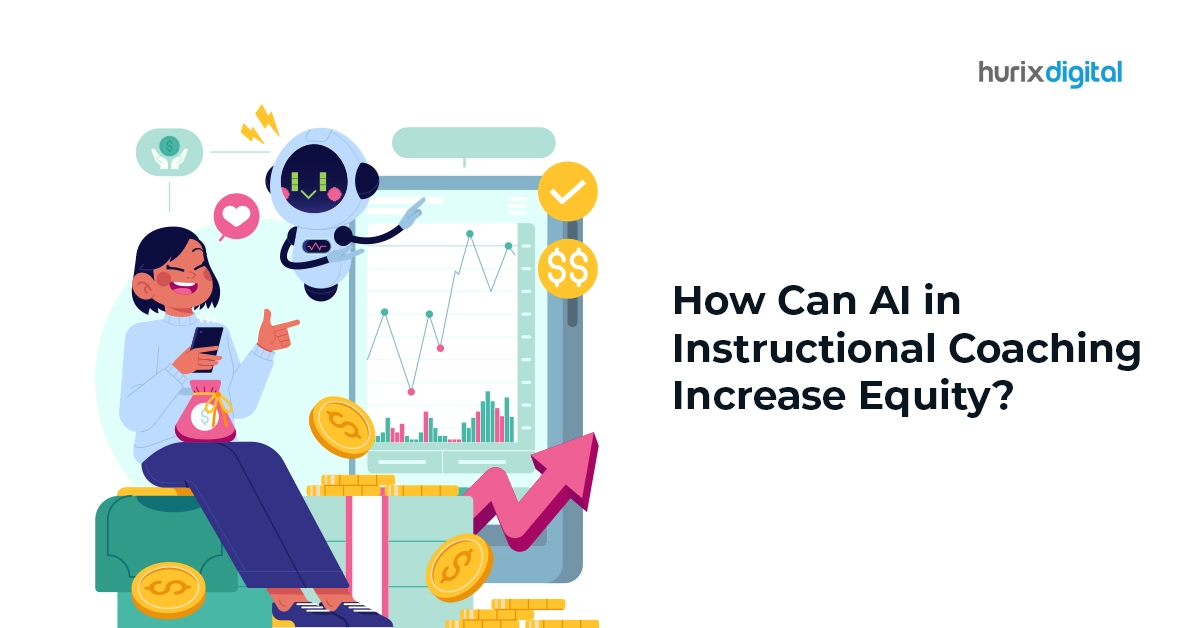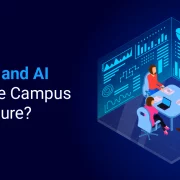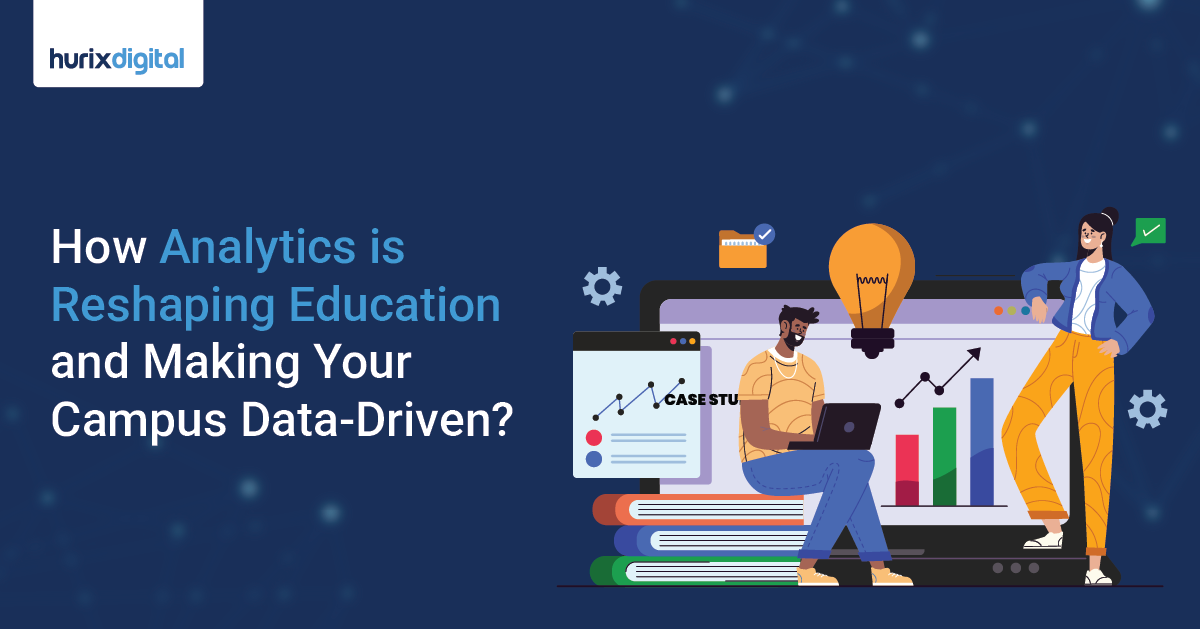
How Analytics is Reshaping Education and Making Your Campus Data-Driven?
Data analytics has a long-standing history and has played a significant role across industries for many years. Its utilization and application have evolved alongside advancements, such as big data, cloud computing, and artificial intelligence. These groundbreaking developments of data science in education have not only enhanced it’s capabilities but also made it more potent and readily available than ever before.
The field of education plays a vital role in modern life, and today, thanks to its rapid digitization post-pandemic, data analytics in education is now possible to help drive data-driven decision-making for the betterment of students. Data analytics in education is rapidly growing at a CAGR of 15.3%. Based on this figure, it is poised to reach a valuation of USD 57.14 billion by 2030.
Data analytics as a service (DAaaS) helps universities make informed decisions for data-driven course upgrades, enhancing student experience and success. The size of the world market for data analytics was estimated at $41.05 billion in 2022 and is expected to increase to $279.31 billion by 2030 from $51.55 billion in 2023.
This blog will explore how data analytics can play a significant role in improving student’s learning outcomes, help educational institutions identify areas of improvement, and discuss a few key points to keep in mind when mining student data.
Table of Contents:
- What is Data Analytics in EdTech?
- What Data is Analyzed in the Education Sector?
- How can Data Analytics in Education Improve Learning Outcomes?
- Best Practices for Working with Educational Data
- The Role of Data Analytics as a Service (DAaaS) in Higher Education
- Transforming Course Design Through Data-Driven Insights
- Tools and Technologies for Data-Driven Decision Making
- Conclusion
What is Data Analytics in EdTech?
The enrollment cliff has greatly impacted the admission rates of colleges in the USA, threatening their ability to survive in a fast-changing digital world.
Data Analytics in EdTech refers to AI-powered digital tools that enable educational institutions to leverage data to survive and thrive despite this reality.
For example, the adoption of a superior Learning Management System (LMS) enables colleges to create, publish, and distribute engaging learning programs digitally. Built-in higher education analytics allow colleges to enhance their enrollment and retention rates and predict the future success of students.
The use of such digital tools enables colleges to disrupt the status quo and reimagine the way they deliver education while also expanding their student base globally.
What Data is Analyzed in the Education Sector?
To understand how data analytics can make a difference in the educational sector, it’s best to understand what kind of data is available to work with.
- Student Data: Educational data mining of student data can give valuable information such as the age, gender, and demographics of students, their attendance, course completion percentages, and grades.
- Administrative Data: Administrative Data encompasses instructors’ productivity levels, effectiveness, and classroom and resource allocation.
When used effectively, the combination of the two can arm policymakers, administrators, and educators to make well-informed decisions to enhance education programs.
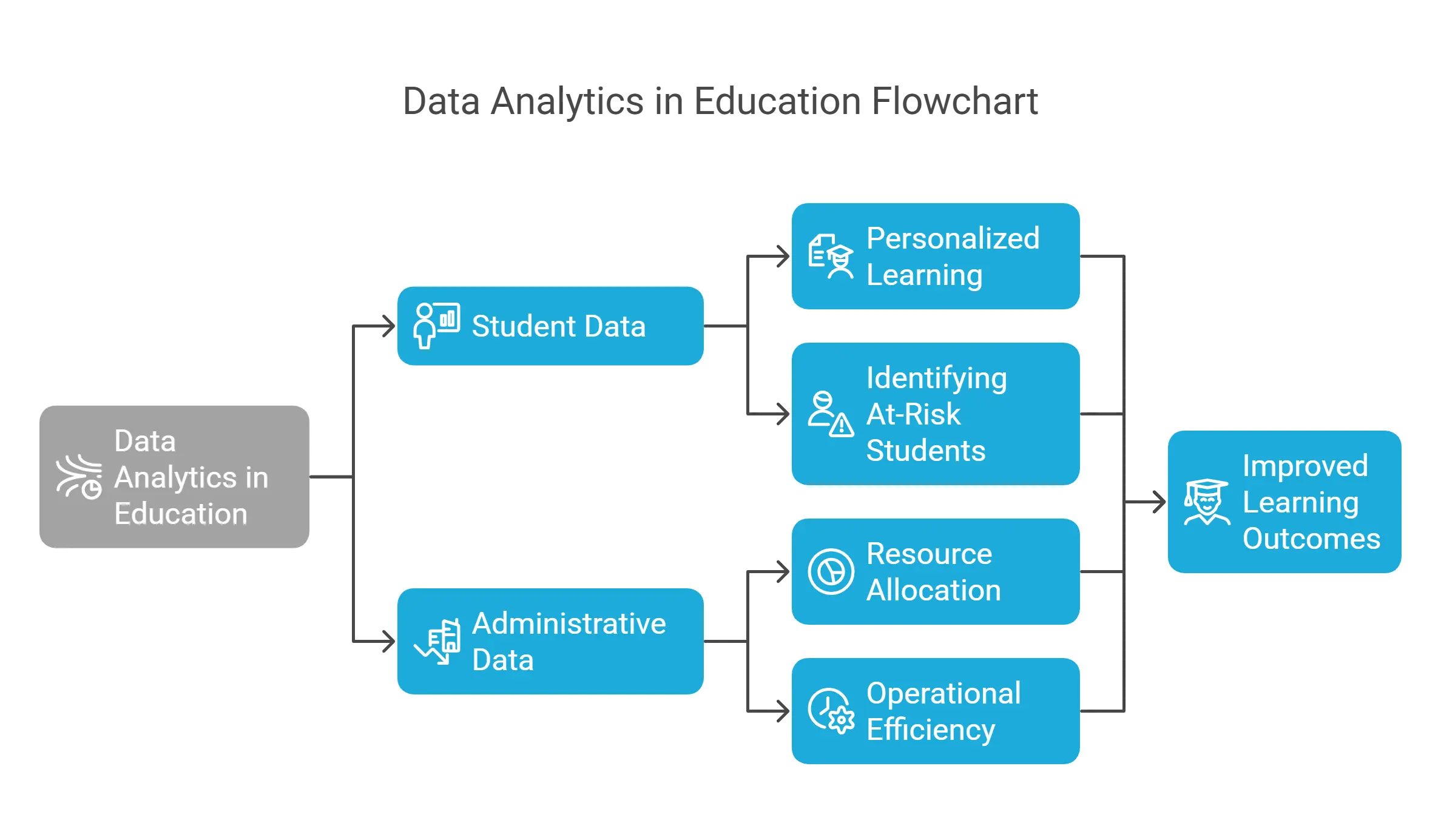
How can Data Analytics in Education Improve Learning Outcomes?
Data analytics in education offers many benefits to improve learning outcomes for students and educational institutions. Let’s look at the benefits of each.
1. Benefits of Data Analytics on Student Data
The major applications of educational data mining of student data are as follows:
- Real-time evaluation of student performance
Traditional teaching methodologies followed a one-size-fits-all approach to learning as well as assessments. They did not take into account the fact that each classroom has varying skill levels. When evaluations were out, it was time to move on to the next set of courses.
Data analytics can give educators a real-time evaluation of student performance. These insights can then be used to address the learning needs of students who cannot keep up.
- Adapative learning approach
Adapting learning is a personalized learning approach that can alter the content and pace and give real-time feedback according to each learner. It is the new norm in education, and its global market size is poised to reach USD 14,114.58 million by 2030.
Adaptive learning uses AI to analyze student data and closely monitor their progress, identify areas of improvement, and provide tailored interventions to help improve student learning outcomes. As a result, students show increased levels of engagement and enhanced knowledge retention, which in turn help boost student self-confidence.
- Identify at-risk students and enable timely intervention
One of the biggest issues that plague higher education today is student attrition. Predictive analytics in education is the solution to this predicament. Educational institutions can use protective data analytics to identify students at risk of dropping out based on their learning progress and assessments.
Data analytics can also go one step further and analyze variables such as financial well-being, engagement, health, and wellness to determine the risk factors for each student. This enables data-driven decision-making to provide personalized feedback, additional tutoring, counseling, and financial aid to at-risk students.
2. Benefits of Data Analytics on Administrative Data
Analysis of administrative data has merits of its own and also plays a critical role in improving students’ overall learning outcomes.
- Ensure ESSA compliance
ESSA, the Every Student Succeeds Act, is a federal K-12 education law that aims to ensure all children have a fair and equal opportunity to obtain a high-quality education, regardless of their background or circumstances.
Data analytics can assist educational institutions in meeting the Every Student Succeeds Act (ESSA) requirements. Educational institutions can use data analytics to track student learning outcomes, identify and support low-performing schools, report and communicate school performance data, and employ data-driven decision-making to improve the effectiveness of their practices and policies.
- Monitor and improve educator performance
Educators play a major role in the overall development of students. They can use data analytics to identify areas of improvement and the effectiveness of their teaching methodologies. These insights can enlighten them on how to adapt their teaching style or alter specific learning plans revolving around topics students are struggling with.
Administrators can also utilize said data to monitor their teaching practices, plan for training sessions, and make better hiring decisions in the future.
- Determine the effectiveness of the current curriculum
Data analytics in education can be used to analyze and improve the efficacy of a curriculum by collecting and analyzing various types of data relating to student learning results, engagement, feedback, and satisfaction.
Educators can then use this information to adjust the curriculum to the needs and preferences of individual students, as well as to monitor and assess the impact of any changes or interventions. As a result, data analytics can offer a data-driven and evidence-based approach to curriculum creation and development.
Best Practices for Working with Educational Data
Data Analytics in education can do wonders to improve student learning outcomes. Certain best practices must be followed when dealing with sensitive and personal data.
- Ensure Each Student has Control over Their Data: This entails allowing students to choose whether they participate in data collection. Care should also be taken to maintain transparency regarding data utilization and its management.
- Restrict Access to Student Data: Student data is sensitive information, and limiting access to only those who need it is paramount. Additional protocols should also be implemented to ensure that data is used only for its intended purpose.
- Use Data Ethically and Responsibly: Students’ data should solely serve the student’s interests and should never be employed in a manner that could cause them harm.
- Be Mindful of the Possibility of Bias within Algorithms: Since algorithms are based on training data, any biases present in the data will also manifest themselves within the algorithm. Care should be taken to avoid any biases when performing data analytics on student data.
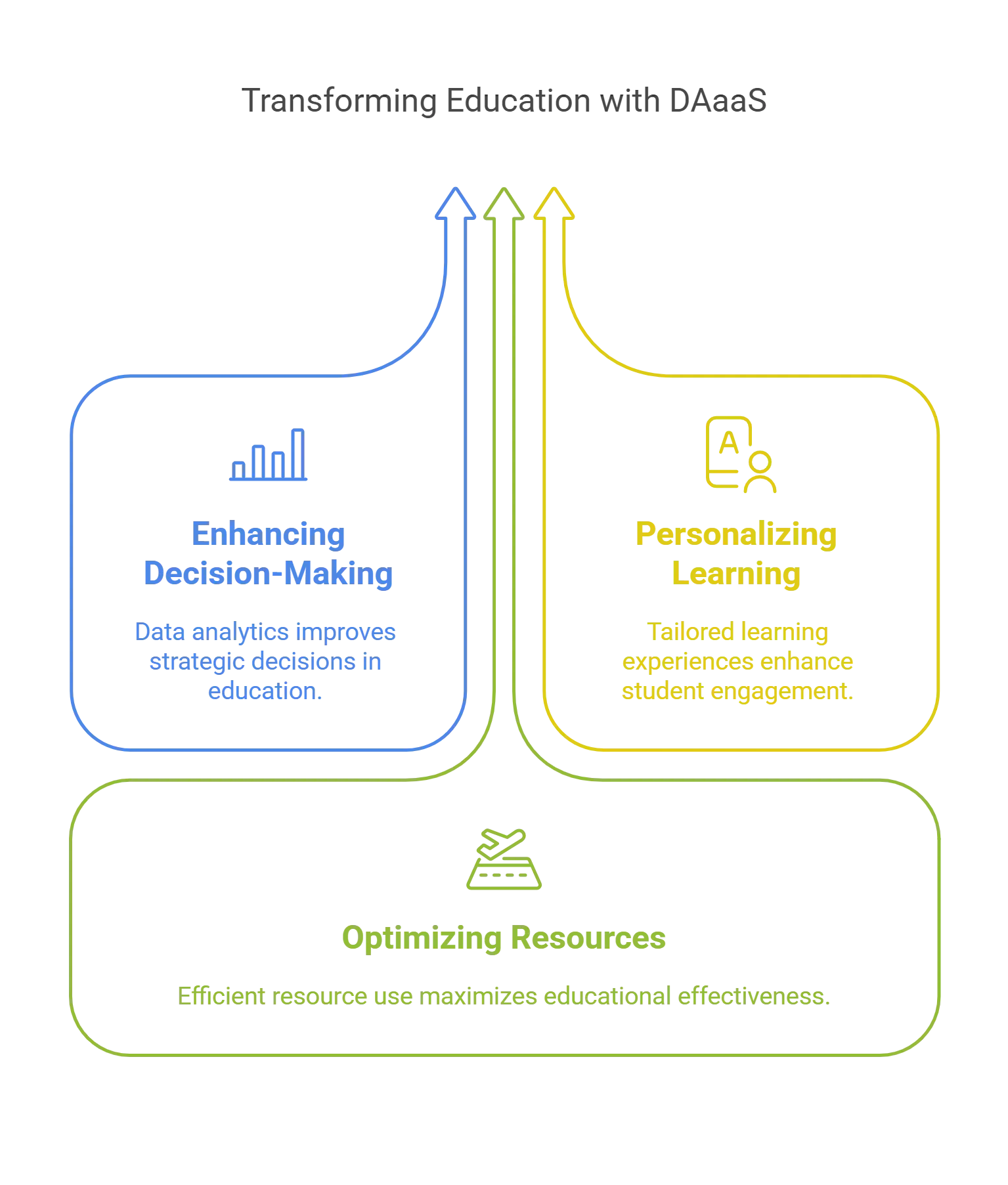
The Role of Data Analytics as a Service (DAaaS) in Higher Education
The concept of data analytics as a service has a strategic function in enhancing and redefining institutions’ decision-making capacity and learning environment.
1. Enhancing Decision-Making
With DAaaS, universities can tap into sophisticated data processing tools without extensive in-house expertise. This enables quick, insightful analysis of vast data sets, such as student demographics, engagement metrics, and academic performance.
For instance, universities can use DAaaS to predict student outcomes, allowing them to identify potential problems and adjust their course offerings proactively. This predictive approach helps educational leaders respond to challenges and anticipate them, keeping institutions a step ahead.
2. Personalizing the Learning Experience
One of the greatest benefits of DAaaS is its ability to support personalized learning. This allows institutions to create individual learning strategies based on the learners’ performance and participation.
For example, DAaaS can help educators identify learners’ behaviors so that they can adapt course delivery in real time. In this case, students are provided with tailored support that helps them improve their performance and, hence, their grades.
3. Optimizing Resource Allocation
Data analytics as a service enables institutions to optimize resource allocation by providing insights into program effectiveness and student needs. Education analytics helps monitor student-teacher retention rates and supports well-informed decisions that improve educational outcomes.
By analyzing data on course enrollment, student performance, and faculty workload, universities can allocate resources more efficiently, directing investments where they will have the greatest impact on student outcomes.
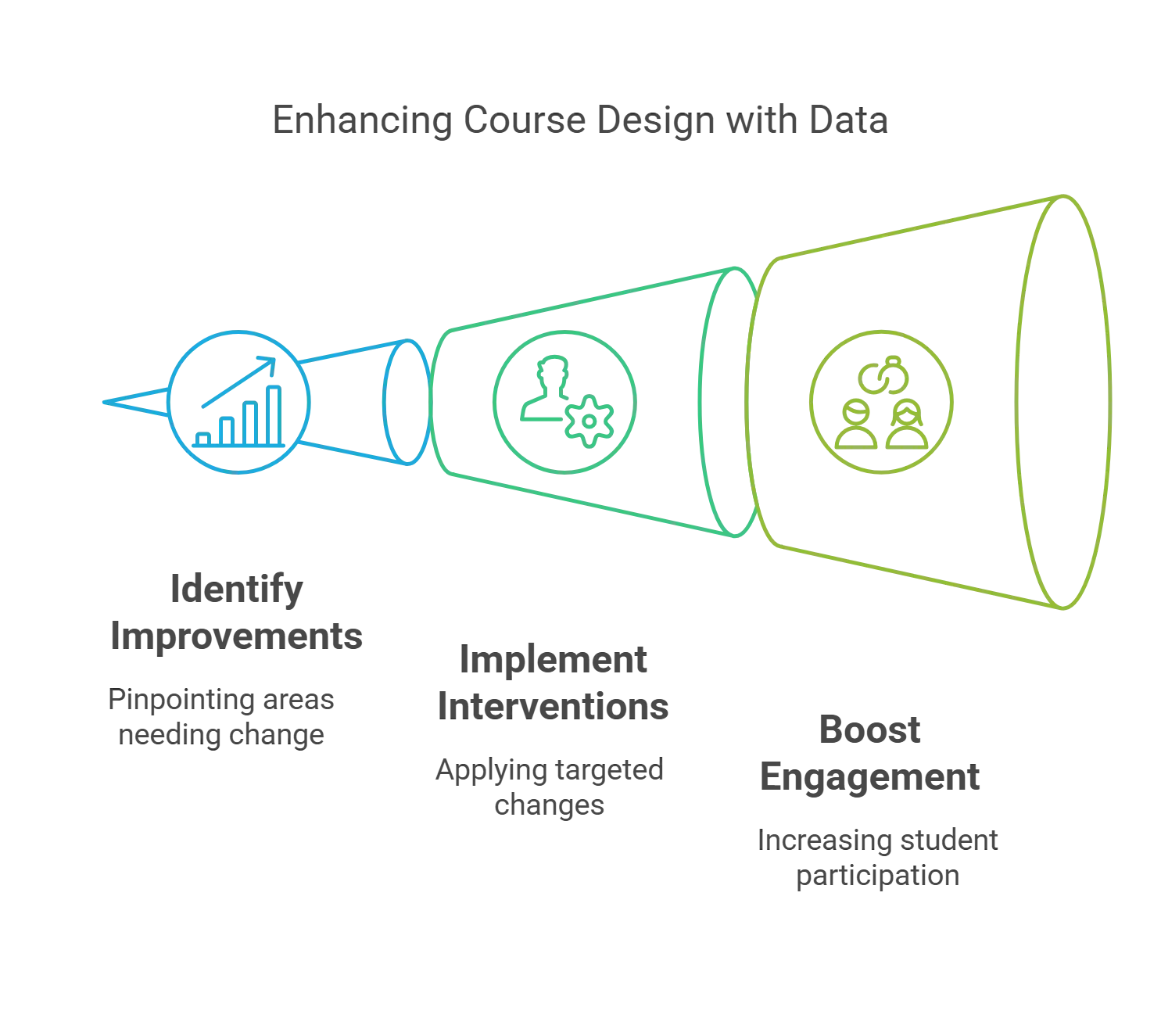
Transforming Course Design Through Data-Driven Insights
Integrating data-driven insights into course design fosters continuous innovation and creates more effective learning environments.
1. Identifying Areas for Improvement
Using DAaaS, academic leaders can analyze key performance indicators, such as assignment completion rates and exam scores, to identify areas where students might struggle. These insights enable institutions to refine their courses, address difficult content, and enhance student engagement.
2. Implementing Targeted Interventions
Data analysis also assists institutions in addressing students who are most at risk in their learning by designing appropriate targeted programs.
Educators can help these students by offering extra assistance through lessons, feedback, or modified course materials. The proactive approach translates to better student outcomes and, therefore, has a positive correlation with retention rates.
3. Improving Student Engagement
Through the use of data analytics as a service, educational institutions can obtain important knowledge on student engagement habits.
Course designers may produce more interesting content and interactive components that students will enjoy by using analytics tools to determine what kinds of content students spend the most time on. As a result, students are more satisfied and learn better results.
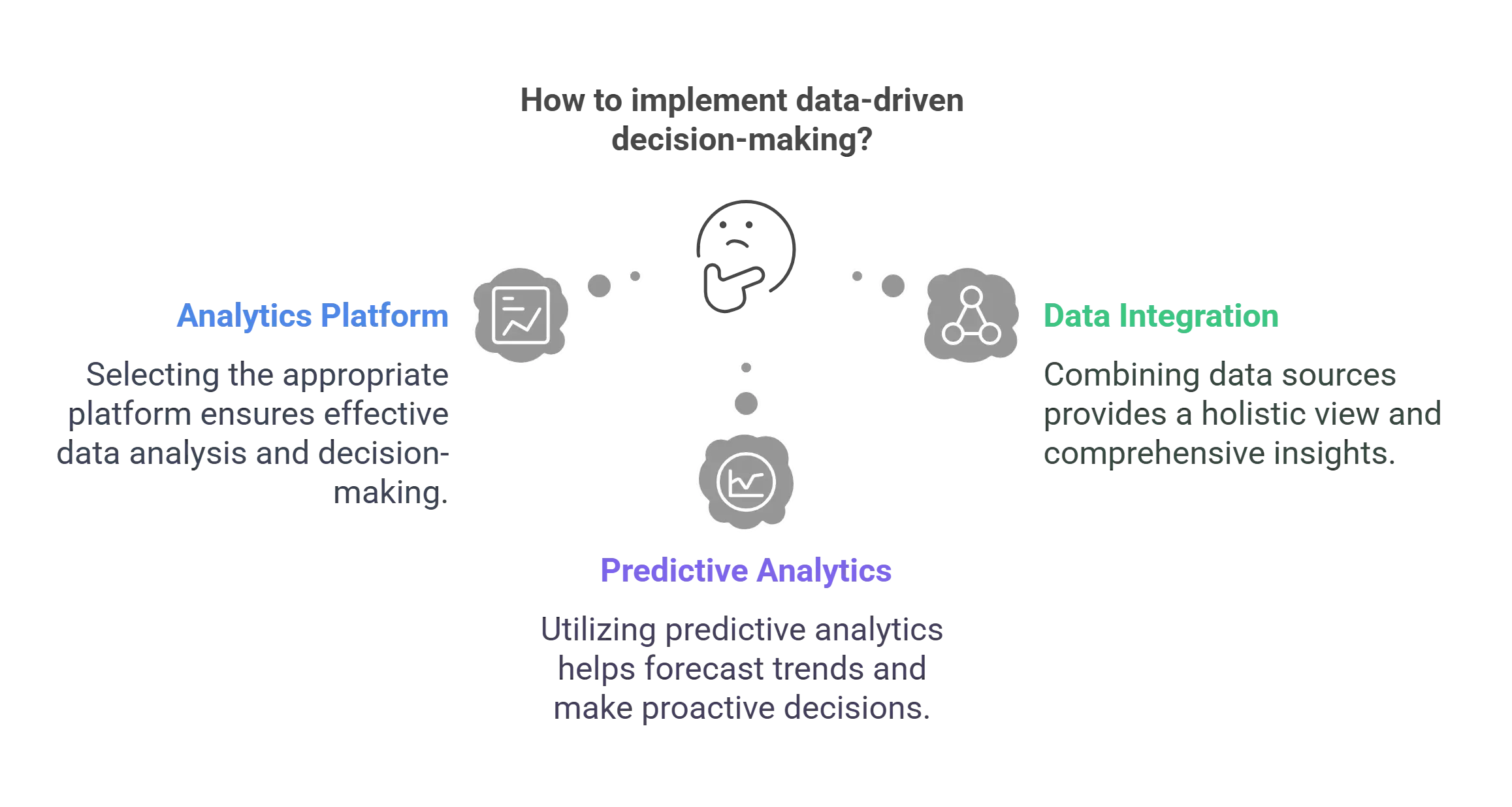
Tools and Technologies for Data-Driven Decision Making
Institutions need the right tools and technologies to embrace data-driven course upgrades fully.
1. Choosing the Right Analytics Platform
For institutions seeking to make data-driven decisions, selecting the best DAaaS platform is key. The ideal solution should offer robust analytics capabilities, intuitive interfaces, and comprehensive reporting tools.
Data security and integration with existing systems are also crucial when choosing a platform.
2. Integrating Data Sources for Comprehensive Insights
Integrating data from various sources—student information systems, learning management systems, and external datasets—provides a comprehensive view of higher education institutions’ educational environments.
This integration assists universities in categorizing performance and discovering areas for enhancement at various points throughout students’ journeys at the institution.
3. Leveraging Predictive Analytics
Predictive analytics is a powerful tool in data-driven course upgrades. Providing adaptive feedback and recommendations helps improve student learning, retention, engagement, and performance.
Institutions can predict students’ challenges by analyzing historical data, identifying patterns, and implementing preventive measures. This leads to higher retention rates and overall success.
Conclusion
As institutions become data-driven, they will be able to stay more relevant to a learner’s needs, preferences, and aspirations. The adoption of data analytics in EdTech enables them to make their courses accessible and agnostic of geographical barriers. They can navigate the enrollment cliff and continue to expand their footprint and legacy in the evolving digital economy.
Colleges looking to deliver high-quality hybrid education and leverage data analytics in EdTech to stay relevant must make early investments in superior technology. Hurix Digital is geared to support you in delivering on your goals. Our state-of-the-art LMS is available both as a licensed version (one-time buy) and via a subscription model.
Get in touch with us to start a conversation.

Senior Vice President – Business Development
Over 25 years of experience in the edtech and workforce learning industry with strong skills in Business Development, Customer Relationship Management (CRM) and Strategy.


